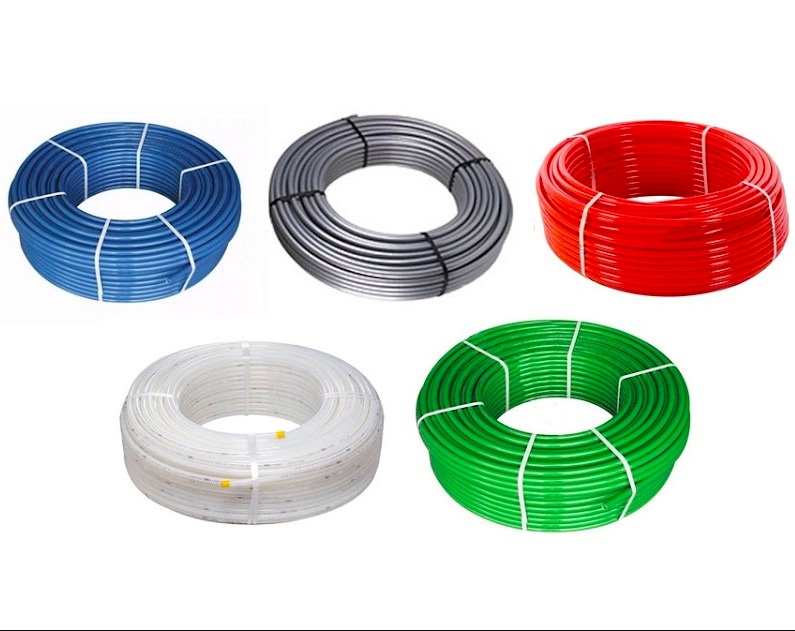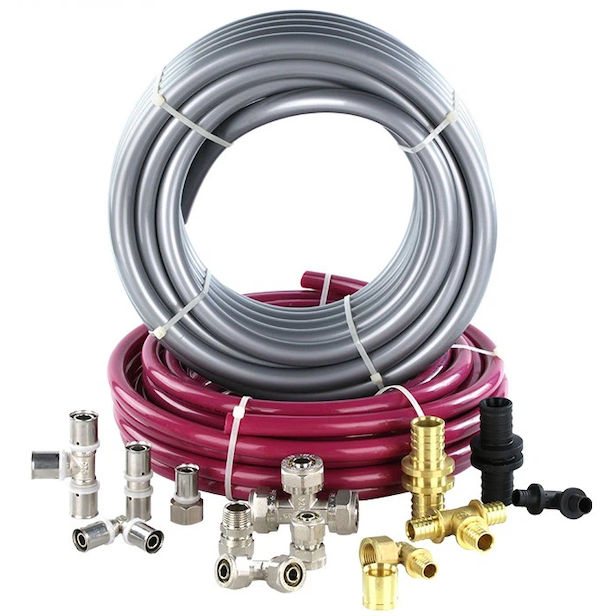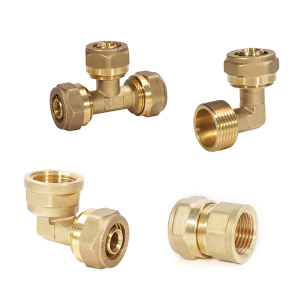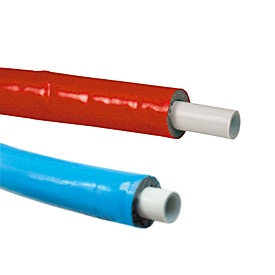Table of Contents
ToggleImportance to understand the Pex pipe sizes
Understanding the different PEX pipe sizes is crucial for various reasons. Knowing what size PEX pipe to use can significantly influence the efficiency of your home's plumbing and heating systems. Let's look at some of the reasons why nowing your PEX pipe sizes is so essential:
Efficient Water Flow: The right pipe size ensures that there is adequate water flow to all fixtures. Too small a pipe might result in poor water pressure while too large a pipe may lead to unnecessary cost and potential issues with water velocity.
Cost Effective: Choosing the correct size pipe helps to optimize costs, as unnecessary use of larger pipes can inflate the initial investment. Conversely, undersized pipes may require future replacement to meet the demand, adding to your overall expense.
Proper Installation: Pipes that fit perfectly save a lot of time and hassle during installation. Each fixture has specific size requirements and using the correct size of PEX pipe will avoid installation mishaps or added adjustments.
Prevent Plumbing Problems: Correctly sized pipes prevent issues like water hammer, which can damage your plumbing system and appliances over time. Incorrect pipe sizes for your demand can cause noises, leaks, and eventually lead to premature system failure.
Meet Building Codes: Understanding PEX pipe sizing is also important from a regulatory perspective. Local codes usually require specific pipe sizes for various appliances and fixtures.
Energy Efficiency: Especially in heating systems, the right PEX pipe size can help the system run more efficiently, saving on energy costs.
Remember, determining the correct size of PEX pipe isn't just about measuring the diameter. It's more about understanding the water demands of your household or building, existing water pressure, and knowing local building codes. Always consult a plumbing professional to ensure that you are choosing the right pipe sizes for your project. They will understand the technicalities better, guiding you to make the most suitable decisions.

pex pipe diamensions
Pex pipe sizes in Inch-Standard ASTM F876
PEX Tube – Dimensions inch
PEX pipes come in a variety of sizes to cater to different applications both in residential and commercial properties. Here are the common PEX pipe standard sizes in inches:
1/4 inch PEX pipe: Though less common, this size is primarily used for ice makers, refrigerators, and other small appliances.
3/8 inch PEX pipe: This size is often used for small fixtures like bidets and single fixtures like bathroom sinks.
1/2 inch PEX pipe: One of the most frequently used sizes, it's standard for many residential plumbing needs. It serves well for most home appliances, including showers and faucets, and is also suitable for branch lines which lead off to individual fixtures.
3/4 inch PEX pipe: This size is mostly used for main supply lines in large homes or for sub-branches that serve multiple fixtures in smaller homes.
1 inch PEX pipe: This size is typically used for distribution lines that supply several individual branch lines. Larger properties or commercial buildings may use this size for their main supply lines.
The main sizes in inch for pex pipe: 3/8” (inch), 1/2 inch pex pipe, 3/4” pex and 1 inch pex pipe. The inch pex sizes refer to the outside diameter (Pex OD) of the pipe. And the most popular size used in residential plumbing and water underfloor heating system. Besides the above pex pipe sizes, we also have pex a and pex b tubing in 1 1/2 inch pex, 2 inch pex, but not used very often.
From the below pex pipe size chart, we can check the 1/2 pex OD, 3/4 pex OD, ID pex wall thickness, etc for the common pex sizes:
Size (inch) | Outside Diameter (OD) inch | Inside Diameter (ID) inch | Pex OD x Wall Thickness(mm) |
Φ3/8” | 0.500" | 0.360" | 12.7*1.78 |
Φ1/2” | 0.625" | 0.485" | 15.88*1.78 |
Φ5/8” | 0.750" | 0.584" | 19.05*2.12 |
Φ3/4” | 0.875" | 0.681" | 22.22*2.47 |
Φ1” | 1.125" | 0.875" | 28.58*3.18 |
Pex pipe sizes in mm-Standard ISO 15875
The pex pipe sizes in inch mainly used is USA, Canada and Mexica, for the pex pipe specs in mm size, mainly used in other countries, as the table below. The common size for plumbing and floor heating is 16mm pex and 20mm pex.
Size 25mm tubo pex is often used in larger residential properties, commercial buildings, agricultural applications, and for geothermal system installations. They act as distribution lines that supply a number of individual branch lines serving multiple fixtures. Additionally, 25mm PEX pipes are also used in radiant floor heating systems for larger zones.
The biggest is 32mm pex tubo, this bigger pipe size is more associated with commercial buildings, industrial applications, apartment complexes, or larger residential structures. They work perfectly for main supply lines due to the volume of water that needs to be dispersed throughout the building. Furthermore, large radiant heating systems often use this size for the main distribution lines as well.
Pex pipe specs, pex pipe dimensions mm
Pipe Size | Fittings | Main Country |
16x2.0, 20x2.0, 25x2.5, 32x3.0 | Pex Compression fittings, Pressing fittings | Australia, and countries in Europe, Africa, Mid East |
16x1.8, 20x1.9, 25x2.3, 32x2.9 | Pex Sliding Fittings (Barbi Sytle) | Spain,Portugal, France, Italy, Brazil, Argentian, Chile, etc |
16x2.2, 20x2.8, 25x3.5, 32x4.4 | Pex Sliding Fittings (Rehau Sytle) | Russia, Ukraine, Germany, Australia, etc |
While these are standard sizes, it's always important to check the specific plumbing requirements in your area, the water pressure, and the flow rate needed for your particular application. It's also wise to consult with a professional to ensure you're choosing the right PEX pipe size for your project.
Pex Color-Do different colors of PEX (red, blue, white) matter?
In terms of quality, durability, and performance, there is no difference between red, blue, or white PEX pipes - they are all made the same way, use the same materials, and undergo the same testing standards. However, the different colors can play a critical role in your plumbing system to help easily identify and maintain separate functions.
Here's a break down on what each color typically signifies:
Blue PEX Pipe: Typically, blue PEX pipes are used for cold water lines. The blue color acts as a clear indicator that the pipe carries cold water, which is especially helpful in distinguishing between pipes in complex or large-scale plumbing systems.
Red PEX Pipe: Red PEX tubing are usually used for hot water lines. The red color indicates a hot water supply, which can prevent potential mix-ups when carrying out repairs or upgrades, thus saving time and reducing chances of error.
White PEX Pipe: White PEX pipes are generally used for either hot or cold water lines. They provide a neutral option when color coding isn't necessary or required. However, some professionals or homeowners may choose to use PEX pipes white color along with the color-specific pipes for a more visually organized system.
Besides the above color red and blue pex pipe, and white pex pipe, we also have black pex tubing 3/4 and 1/2”, green pex pipe, orange pex tubing, etc.
Remember, while the color-coded system is a useful organizational tool, there's no hard and fast rule that you must abide by it. The colors serve primarily to simplify identification, contributing to quicker and more efficient maintenance and repairs.
So, while the colors don't impact their functionality, they can make life easier, especially for those who are managing complex plumbing or heating systems. When in doubt, consulting with a professional plumber can always guide you to make the right choices for your specific needs.
For more information, welcome to contact us

















